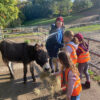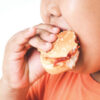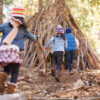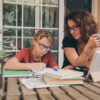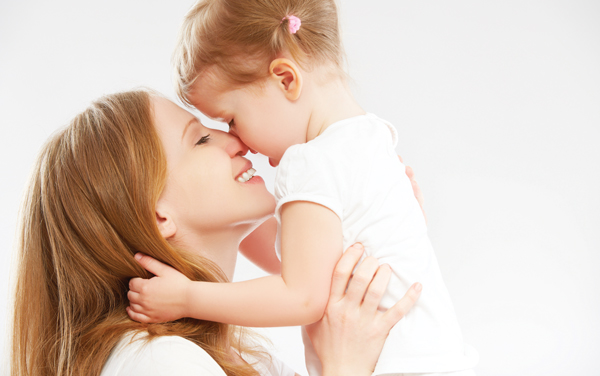
by Abby Dunn
Psychologist at the University of Sussex
The last couple of years have been tough for everyone. The Covid pandemic has left many adults and children feeling uncertain, stressed and anxious at times. Several pieces of research have highlighted the heavy burden this period has put on parents of young children. If you are a parent or carer you may have found things overwhelming at times. You are not alone in those feelings. Almost every mum and dad across the country will have done so at some point.
At the Parenting with Anxiety Team we specialise in supporting families. We hope that the following will provide some useful information and reassurance. But also remember that you are the expert on your family.
Parents with anxiety are ‘super-parents’
From our work with parents we know that almost all of them go to massive efforts to do what is best for their children and that they are doing this while managing their own anxiety. Think of Ginger Rogers doing everything Fred Astaire did, but backwards in high heels. It is not easy!
We know that all parents can think they are not doing a good enough job, so it was great to hear a mother we work with describe anxious parents as ‘super-parents’. And they are! Super at managing their anxiety at the same time as juggling the demands of parenthood. If you are in this situation, take a moment to recognise that you are super too.
You are just one part of what makes your child who they are
If you find yourself experiencing anxiety, you may worry about the impact it has on your children. You may notice that they express some anxious feelings of their own. If that is the case remember that a huge number of different factors contribute to making your child the amazing individual he or she is. It is not all down to you. It is also worth remembering that when your child is anxious your understanding of your own anxiety can give you special insight into what they are going through.
Your child’s anxieties are not your own
When you feel anxious, your child’s worries can be overwhelming. It can be useful to remember that all children worry at times and it is perfectly normal. Sometimes you might be tempted to step in and fix things for them, so they don’t have the same experiences you did.
School experiences can be a point when we transplant the feelings we have about our experiences onto our children. But their experiences are different and the things which worry us may not affect them in the same way. Similarly, when your child is worried about something you do not have to share those feelings. If you can step back a little from their worries you will be better able to help them cope with them. This is not always easy and don’t beat yourself up if you do find yourself sharing their fears.
If you are worried, encourage your child to talk, and listen
Just by noticing that something is going on for your child you have already shown real sensitivity. The next thing to do is support them to share what they are feeling. You do not necessarily have to solve things – you might not be able to and that is OK. If worries are coming up at bedtime focus on soothing them and try and have a gentle conversation about it at another time. Sometimes it can help to have a chat while you are both more relaxed, for example in the car, while playing or walking back from the shops.
To find out more about the project at the University of Sussex please visit www.parentingwithanxiety.org.uk

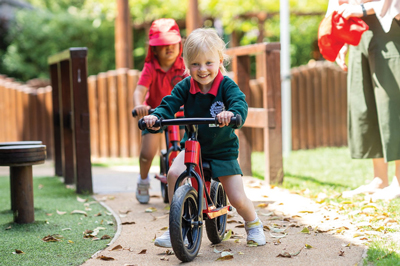
 Simple activities such as tree climbing and den building are rich in learning opportunities and should not be underestimated. When climbing a tree, children should be encouraged to consider their physical space, where their feet need to be placed, whether they feel comfortable and how high they think they should climb in order to stay safe. Parents should always be there to supervise but should contemplate the level of support given in order to develop their child’s own risk awareness and physical resilience. The simple act of climbing trees builds upper body strength, core stability and balance which are all gross motor skills which support progress in writing and Reception readiness.
Simple activities such as tree climbing and den building are rich in learning opportunities and should not be underestimated. When climbing a tree, children should be encouraged to consider their physical space, where their feet need to be placed, whether they feel comfortable and how high they think they should climb in order to stay safe. Parents should always be there to supervise but should contemplate the level of support given in order to develop their child’s own risk awareness and physical resilience. The simple act of climbing trees builds upper body strength, core stability and balance which are all gross motor skills which support progress in writing and Reception readiness. There is so much more to writing than tracing and forming letters. The simple act of taking your child to the woods gives them the chance to explore, climb trees, collect leaves and acorns, swing from branches, carry and roll logs and dig. These simple activities can all contribute to your child’s ability to be able to physically write when they enter their Reception year. Why not enhance your trip to the woods by taking some potato peelers and whittling freshly cut branches? A simple activity that teaches perseverance and concentration, requires force and control and uses both sides of the body, supporting progression in writing without actually writing.
There is so much more to writing than tracing and forming letters. The simple act of taking your child to the woods gives them the chance to explore, climb trees, collect leaves and acorns, swing from branches, carry and roll logs and dig. These simple activities can all contribute to your child’s ability to be able to physically write when they enter their Reception year. Why not enhance your trip to the woods by taking some potato peelers and whittling freshly cut branches? A simple activity that teaches perseverance and concentration, requires force and control and uses both sides of the body, supporting progression in writing without actually writing. PANTS stands for:
PANTS stands for: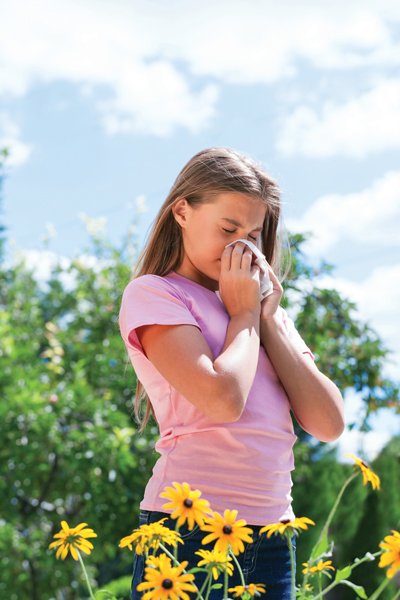
 Kids love being involved with grown-up tasks, so one of the best ways to encourage a healthy relationship with food is by asking them to help out in the kitchen. Allowing them to handle the ingredients at each stage of cooking a meal helps them become more familiar with the food they’re eating, and is a great way to reduce feelings of anxiety at mealtimes.
Kids love being involved with grown-up tasks, so one of the best ways to encourage a healthy relationship with food is by asking them to help out in the kitchen. Allowing them to handle the ingredients at each stage of cooking a meal helps them become more familiar with the food they’re eating, and is a great way to reduce feelings of anxiety at mealtimes. If you’ve got the outdoor space, why not grow your own fruits and vegetables? Not only is this a fun way to teach your family about where their food comes from, but your little ones are also more likely to eat the food if they’ve grown it themselves. By the time a new ingredient is ready to plate up, your child will already be familiar with the shape and smell – all that will remain is to taste it!
If you’ve got the outdoor space, why not grow your own fruits and vegetables? Not only is this a fun way to teach your family about where their food comes from, but your little ones are also more likely to eat the food if they’ve grown it themselves. By the time a new ingredient is ready to plate up, your child will already be familiar with the shape and smell – all that will remain is to taste it! Turning mealtimes into a game is another great way to encourage your children to have a healthy relationship with food. Consider creating a rewards chart and give everyone a star for each fruit or vegetable they eat. Why not add an extra element of competition by offering a prize to whoever has the most stars by the end of
Turning mealtimes into a game is another great way to encourage your children to have a healthy relationship with food. Consider creating a rewards chart and give everyone a star for each fruit or vegetable they eat. Why not add an extra element of competition by offering a prize to whoever has the most stars by the end of Sometimes, all it takes it a little creativity to get your little ones to eat their meals, so it’s worth taking some extra time to present their dishes nicely. For example, experimenting with colour and choosing a vibrant array of vegetables served on matching tableware is a great way to make your dishes look more appetising. Add an extra touch of artistic flair by making fun faces out of the ingredients.
Sometimes, all it takes it a little creativity to get your little ones to eat their meals, so it’s worth taking some extra time to present their dishes nicely. For example, experimenting with colour and choosing a vibrant array of vegetables served on matching tableware is a great way to make your dishes look more appetising. Add an extra touch of artistic flair by making fun faces out of the ingredients. In some cases, it’s the taste and texture of vegetables that can put your little ones off eating them. So, one of the easiest ways to get your children to eat their vegetables is when they don’t know they’re there at all! This is a great way to up your family’s vitamin intake, especially if the children haven’t been swayed by your previous tactics.
In some cases, it’s the taste and texture of vegetables that can put your little ones off eating them. So, one of the easiest ways to get your children to eat their vegetables is when they don’t know they’re there at all! This is a great way to up your family’s vitamin intake, especially if the children haven’t been swayed by your previous tactics.


